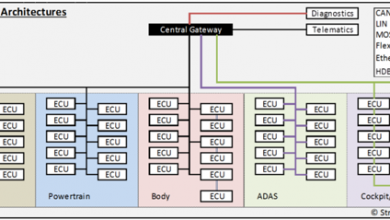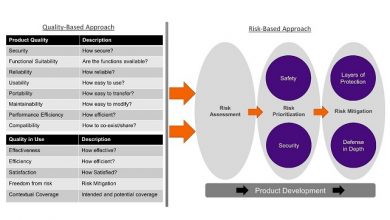On 5G Networks and Mobile Edge Computing in Connected Vehicles

Over the last few years, connected vehicles have evolved, with automakers installing telematics control units (TCUs) in partnership with telematics service providers (TSPs) and multiple announcements made on connected car cloud and industrial cloud platform developments. Additionally, major changes came about in hardware (4G TCU) and operating system (OS), with almost all automakers launching infotainment systems with advanced in-vehicle experiences. Connected vehicle ecosystem and increased sales of Electric Vehicles (EV) have spearheaded embedded telematics to reach more than 85% penetration in US and EU markets though some automakers are increasingly reliant on Google Automotive Services (GAS) while others continue to encourage home-grown OS to keep tabs on technology know-how. As migration to 5G networks is still ongoing, automakers continue to install 4G TCUs to enable connected vehicles.
Connected Cars and 5G
The number of connected vehicles is growing rapidly capturing almost 35% of the total number of vehicles on the road and with revenue from connected vehicles of about $18 billion. A typical Vehicle to Everything (V2X) architecture is depicted in Figure 1 (Ref [1]) wherein communication of vehicles and roadside sensors with a roadside unit (RSU) is intended to increase the safety, efficiency, and convenience of the transportation system, by the exchange of critical safety and operational data. The key element is LTE/5G networks which enables communication with V2I, V2V, and V2P through Edge Cloud. This architecture also provides value added services such as car finder, parking location and entertainment services.
The V2X architecture in Figure 1 depicts “connected digital ecosystem” providing several smart services opportunities for drivers, passengers, automakers, and mobile network/telematics service providers such as: (i) Advanced/Automated Driver Assistance Systems/Services (ADAS) as driver assistant, parking assistant, self-parking, and semi-automated/automated driving, (ii) Telematics as traffic alerts and road weather condition alerts, (iii) Infotainment services as music/video streaming, (iv) Enhanced visit experience to tourists with Augmented Reality (AR) and Virtual Reality (VR), and (v) Remote diagnostics/maintenance through software/firmware over-the-air (SOTA/FOTA) updates.
The 5G spectrum operates in 3-300 GHz, has bandwidth (BW) of 0.25-1 GHz, data rate of up to 20 Gbps, spectral efficiency of 30 bps/Hz, mobility of up to 500 km/h, U-plane latency of 0.5 ms, C-plane latency of 10 ms, and with applications comprising voice, data, video call, digital video broadcasting (DVB), video chat, VR/AR/3600 videos, UHD videos, V2X, IoT, smart city, and wearable devices. With 5G networks, it is possible to deliver an extensive variety of services comprising enhanced mobile broadband (eMBB), ultra-reliable and low-latency communications (uRLLC), and massive machine type communications (mMTC). The 5G commercial network coverage across the world as of December 2019 is shown in Figure 2 (Ref [2]), with about 65% of the world population to be covered by 2025.
Mobile Edge Computing
Mobile Edge Computing (MEC) is a new technology being standardized in the Industry Specification Group (ISG) under European Telecommunications Standards Institute (ETSI). MEC provides cloud-computing capabilities at the edge of the mobile network, within the Radio Access Network (RAN) near mobile subscribers. MEC offers distinct advantages such as reduced latency, highly efficient network operation and service delivery, and improved user experience. MEC is a natural development in the evolution of mobile base stations and the convergence of IT and telecommunications networking as it represents a key technology and architectural concept to enable the evolution to 5G and satisfy the demanding requirements of 5G in terms of expected throughout, latency, scalability and automation. The market drivers of MEC, as shown in Figure 3, include business transformation, technology integration, and industry collaboration.
Mobile Edge Computing provides improved Quality of Experience (QoE) in close proximity to end users and opens up services to regular and enterprise customers as well as to adjacent industries that can now deliver their mission-critical applications over the mobile network (Fig 4). MEC enables a new value chain and develops favourable market conditions which will create sustainable business for all players in the value chain. MEC opens up fresh business opportunities and a myriad of new use cases across multiple sectors to facilitate global market growth. MEC helps to create a standardized, open environment that not only allows the efficient and seamless integration of applications across multi-vendor MEC platforms but also ensures that most of the customers of a mobile operator can be served.
Engineering community will continue to face the dual challenges of handling increased volume of data from ever increasing number of connected vehicles while trying to maintain or reduce the latency to ensure faster response time and critical/quick decision making, especially for semi-automated and automated vehicles.
MEC-based Vehicle-to-Cloud solutions enable edge cloud capabilities for different levels of autonomous driving, including Highly Autonomous Driving (HAD) and Fully Autonomous Driving (FAD), corresponding to SAE Levels 4 and 5 of automation, respectively. MEC can be used to extend the connected car cloud into the highly distributed mobile base station environment and enable data and applications to be housed close to the vehicles. This can reduce the round-trip time of data and enable a layer of abstraction from both the core network and applications provided over the internet. MEC provides real-time driving services by utilizing High Definition real-time Maps, real-time traffic monitoring and alerts, and richer passengers experience. MEC applications can run on MEC servers which are deployed at the LTE base station site to provide the roadside functionality, to support vehicles on roads to drive cooperatively, to be aware of road hazards, and to provide better user experience and trust to drivers and passengers. The MEC applications can receive local messages directly from the applications in the vehicles and the roadside sensors, analyse them and then propagate (with extremely low latency) hazard warnings and other latency-sensitive messages to other cars in the area. This enables a nearby car to receive data in a matter of milliseconds, allowing the driver to immediately react.
Figure 5 depicts the MEC Support to Services for Connected and Autonomous Vehicles by offering Network slicing and Data Analytics at the edge (Ref [1]). As shown in Figure 5, the following features enable MEC:
- Network Slicing to tailor the capacity and capabilities of the network for each different service
- Service-specific profiles for dynamic assignment of service-specific HW-acceleration to optimize the compute and storage based on simultaneous services requirements
- Hierarchical deployment of the MEC environment using a hierarchy of gateways/RSUs with MEC servers arranged to reduce the latency and distribute the processing.
Summary and Way Forward
5G networks with significantly low latency and high network reliability play a critical role in connected vehicle communication networks. Mobile Edge Computing can be considered as a key technology supporting multiple services for Connected and Autonomous Drive vehicles. MEC enables innovative service scenarios that can ensure enhanced personal experience and optimized network operation, as well as opening up new business opportunities. MEC attracts a new value-chain and energized eco-system, where all players can benefit from closer collaboration. MEC supports different deployment options, as MEC servers can be located at different places within the Radio Access Network depending on technical and business requirements. MEC applications leverage proximity to users and vehicles along with network and context information to offer quick decision making with reduced latency. Efforts are continuing towards standardization of MEC technology, as open standards are the way to open the market and to ensure interoperability. A proper synergy between standards (ETSI, 3GPP) and 5GAA is considered particularly important for the development of interoperable technology solutions and for the acceleration of their commercial availability and global market penetration.
As a way forward, the MEC ISG is developing the foundation to enable an open radio access network (RAN) which can host third party innovative applications and content at the edge of the network. A MEC Proof-of-Concept (PoC) program has been established to demonstrate the viability of MEC implementations. Feedback is taken from the results and lessons learned by the MEC PoCs to improve the ISG MEC specification activities. The ISG is open to members and non-members of ETSI to participate and contribute towards this innovative technology, and to take part in the PoC activities
References
1. D. Sabella et al., “Towards fully connected vehicles: Edge computing for advanced automotive communications,” White paper, Dec 2017, https://5gaa.org/news/toward-fully-connected-vehicles-edge-computing-for-advanced-automotive-communications/
2. M.H. Alsharif et al., “Sixth Generation (6G) wireless networks: vision, research activities, challenges, and potential solutions,” Symmetry 2020, 12, 676, doi:10.3390/sym12040676
3. Y.-C. Hu et al., ”Mobile Edge Computing: A key technology towards 5G,” ETSI White paper No. 11, ISBN No. 979-10-92620-08-5 https://www.etsi.org/images/files/etsiwhitepapers/etsi_wp11_mec_a_key_technology_towards_5g.pdf
Author:

Dr. Arunkumar M. Sampath
Chief Engineer and Head Innovation Centre
Mahindra Electric Mobility Limited
Dr. Arunkumar M. Sampath is a Chief Engineer and Head Innovation Centre at Mahindra Electric Mobility Limited in Bangalore. His interests include Hybrid and Electric Vehicles, Sustainable Technologies, Connected and Autonomous Vehicles, Functional Safety, AI, ML, Data Analytics, and Data Monetization Strategies.
Published in Telematics Wire





